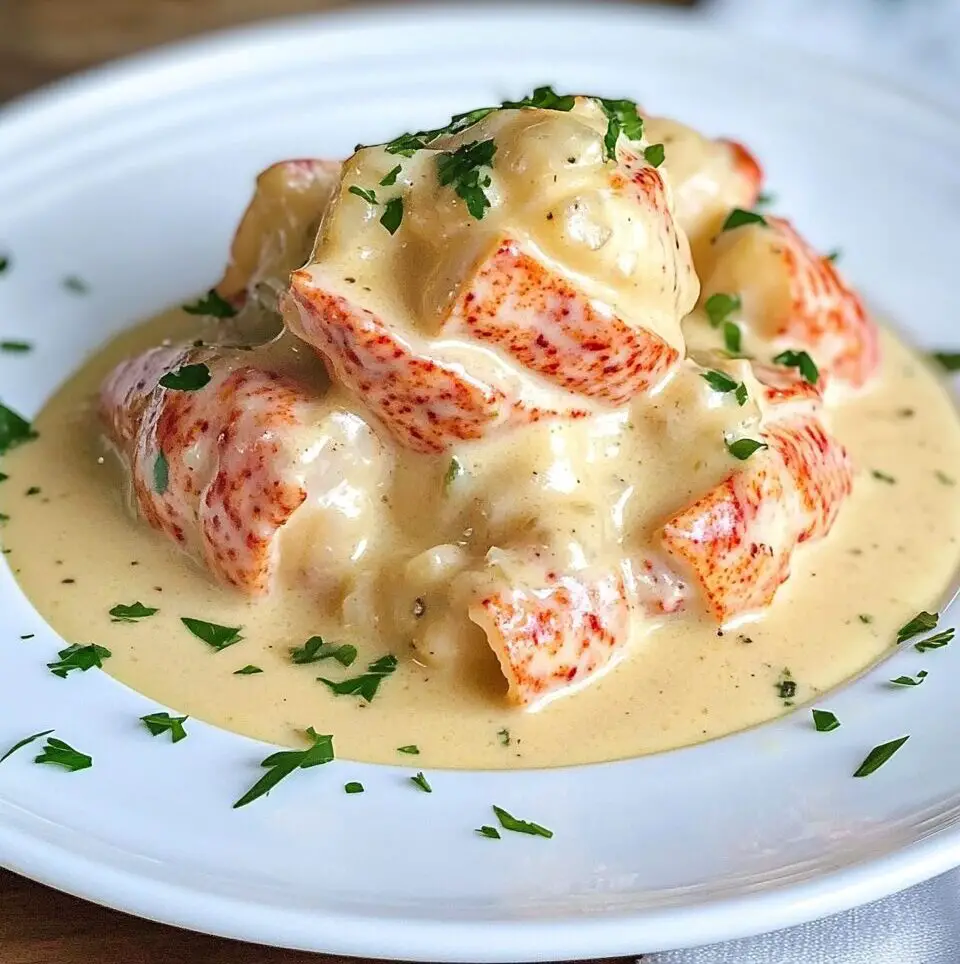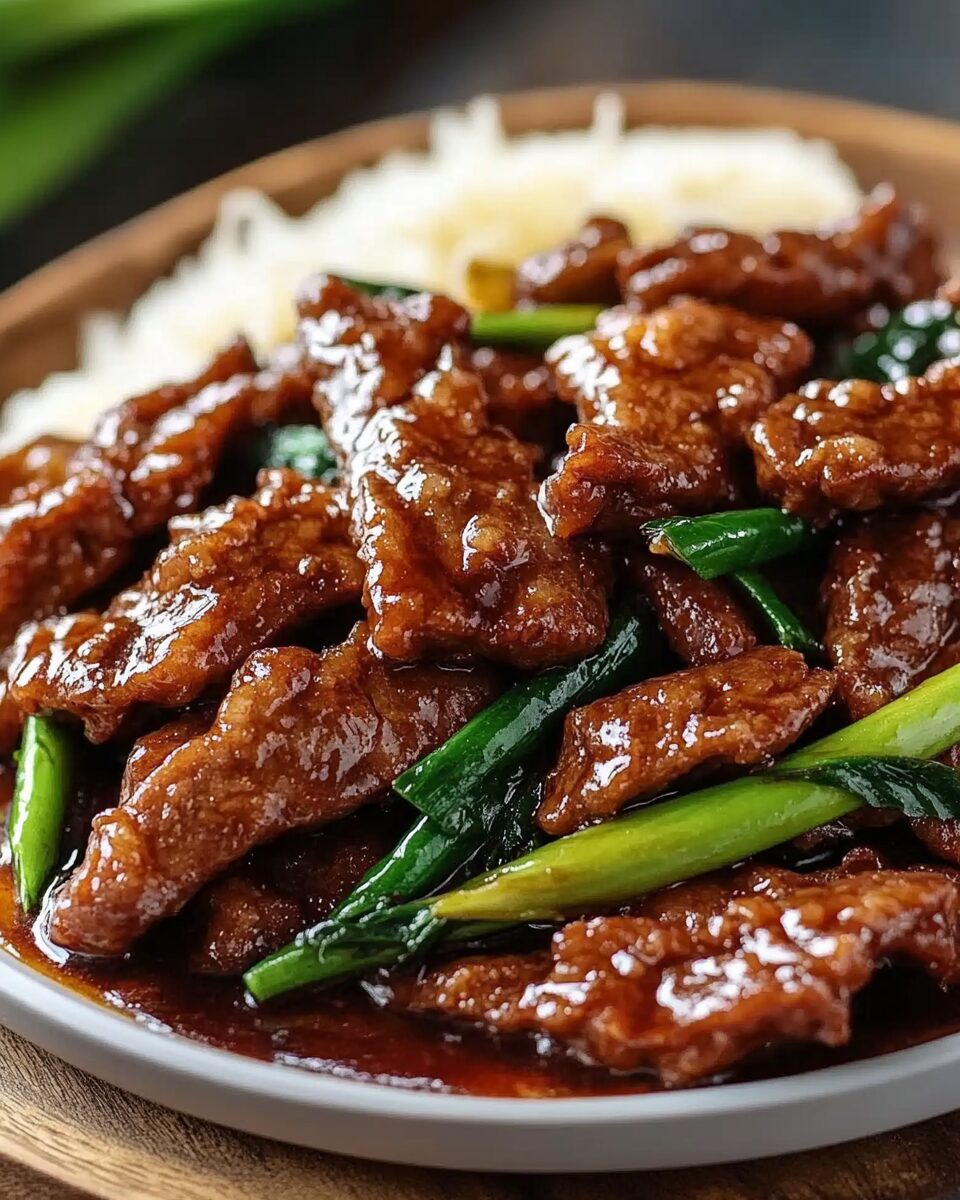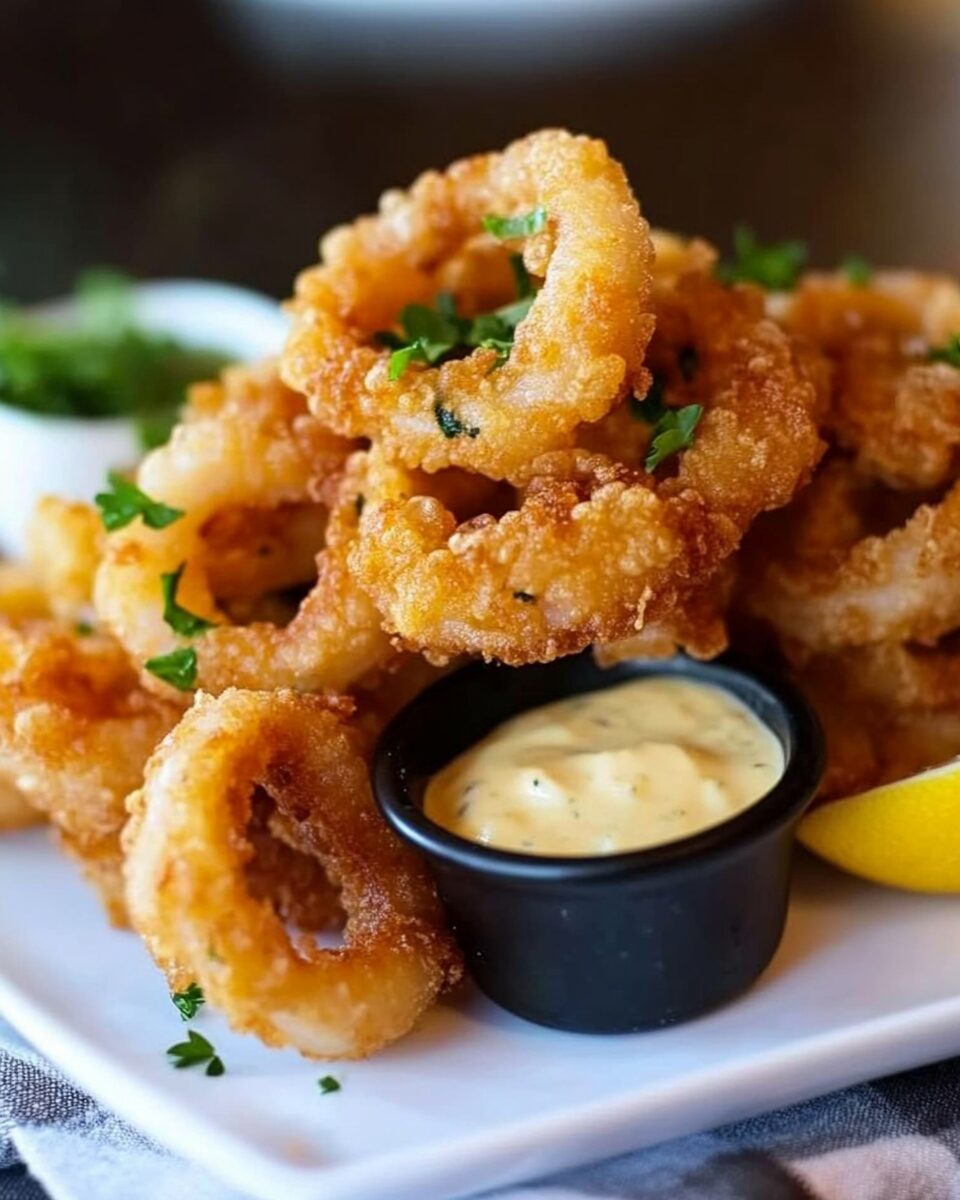Classic Lobster Newburg is the pinnacle of indulgent seafood dishes. With roots in 19th-century American fine dining, it features tender lobster meat gently simmered in a rich, buttery cream sauce enhanced with mushrooms, sherry or brandy, and egg yolks. Ideal for special occasions or an elevated dinner at home, this recipe offers a refined and flavorful experience that never fails to impress.
Full Recipe:
Ingredients
-
1½ pounds cooked lobster meat (fresh or thawed frozen)
-
4 tablespoons unsalted butter
-
½ cup finely chopped onion
-
1 cup sliced mushrooms
-
¼ cup all-purpose flour
-
2 cups lobster stock (or chicken stock)
-
1 cup heavy cream
-
2 egg yolks
-
2 tablespoons brandy (optional)
-
1 teaspoon Worcestershire sauce
-
½ teaspoon paprika
-
Salt and pepper, to taste
-
Fresh parsley, chopped (for garnish)
Directions
-
Prepare the Lobster
-
If using whole lobsters, boil in salted water for 8–10 minutes. Remove meat and cut into bite-sized pieces.
-
-
Sauté Aromatics
-
Melt butter in a large skillet over medium heat.
-
Add onions and mushrooms; cook until onions are translucent.
-
-
Make the Roux
-
Sprinkle in flour and stir for 2–3 minutes until smooth and lightly golden.
-
-
Add Stock
-
Gradually whisk in lobster stock until the sauce thickens.
-
-
Add Cream
-
Lower heat and stir in heavy cream until fully incorporated.
-
-
Temper the Egg Yolks
-
In a bowl, mix yolks with a few spoonfuls of hot sauce. Slowly return the mixture to the skillet, stirring continuously.
-
-
Flavor the Sauce
-
Add brandy (if using), Worcestershire sauce, paprika, salt, and pepper. Simmer gently for 5 minutes.
-
-
Add Lobster
-
Fold in the lobster and warm through for 2–3 minutes.
-
-
Final Touch
-
Adjust seasoning. Remove from heat and garnish with chopped parsley.
-
-
Serve
-
Serve hot over buttered toast, rice, or pasta. Pair with a crisp white wine for added elegance.
Nutrients (Per Serving, serves 4–6)
-
Calories: 480 kcal
-
Protein: 28g
-
Fat: 36g
-
Carbohydrates: ~8g
Origins and Cultural Significance
Lobster Newburg has a fascinating culinary history steeped in American opulence. The dish is believed to have been invented around 1876 by a sea captain named Ben Wenberg, who introduced the recipe to Charles Delmonico of Delmonico’s restaurant. Originally dubbed “Lobster à la Wenberg,” the dish was renamed “Newburg” after a dispute between the two men, replacing the ‘W’ with a ‘U’ but keeping the recipe intact.
The dish quickly became one of the restaurant’s most celebrated offerings and a hallmark of Gilded Age dining. It symbolized wealth and sophistication in a time when lobster was considered a delicacy rather than the everyday food we know it as today. Over the decades, Lobster Newburg has appeared on countless high-end menus and has come to represent the pinnacle of classical seafood preparation in American cuisine.
Why You’ll Love Lobster Newburg
There’s something irresistibly indulgent about Lobster Newburg. From the first bite, you’ll be captivated by the richness of the cream, the subtle warmth of the brandy, and the depth of flavor brought by the lobster stock and Worcestershire sauce. The sauce, smooth and luxurious, gently coats each piece of lobster, allowing its natural sweetness to shine without being overshadowed.
It’s also surprisingly flexible in terms of serving options. You can keep it classic with toast points or puff pastry shells, serve it over al dente pasta for a decadent twist, or spoon it onto a bed of rice for something more grounded. However you serve it, the texture and flavor are consistently luscious and comforting.
Despite its elegant appearance, the recipe itself is straightforward, making it an accessible yet impressive choice for home cooks looking to elevate their seafood game. If you’re hosting a dinner party, it’s guaranteed to leave a lasting impression.
Health Benefits
Though undeniably rich and decadent, Lobster Newburg does provide several nutritional benefits—particularly from the lobster itself. Lobster is an excellent source of lean protein, offering essential amino acids without excess fat. It’s also rich in vitamins and minerals like vitamin B12, zinc, selenium, and phosphorus, all of which support energy metabolism, immune function, and bone health.
The use of mushrooms and onions adds fiber, antioxidants, and other beneficial phytonutrients. While the dish does include heavy cream and butter, both of which contribute saturated fat, it’s typically served in moderate portions and can be balanced with lighter sides like steamed vegetables or a green salad.
For those looking to lighten the dish, you can substitute part of the cream with whole milk or use Greek yogurt to temper the egg yolks. These small adjustments can make the dish more health-conscious without sacrificing flavor.
Serving Suggestions
Lobster Newburg is traditionally served in a way that emphasizes its opulence and rich texture. Buttered toast points, puff pastry shells, or vol-au-vent cases are the most iconic pairings, offering a buttery, flaky contrast to the silky sauce. If you prefer a heartier base, try angel hair pasta, creamy mashed potatoes, or buttered white rice.
To balance the richness of the dish, serve it alongside a crisp, acidic white wine such as Sauvignon Blanc, Chardonnay, or a dry Riesling. A side of blanched asparagus, steamed green beans, or a citrus-dressed arugula salad adds brightness and freshness to the plate.
For an elegant plated meal, garnish with a sprig of parsley or fresh chives and serve with freshly cracked black pepper for added depth.
Common Mistakes to Avoid
Lobster Newburg, though relatively simple, requires care to achieve its signature texture and flavor. One common error is overcooking the lobster, which can cause it to become rubbery. Always cook or reheat lobster gently and only until just warmed through.
Another mistake is curdling the sauce. Since egg yolks are used to enrich the cream base, it’s crucial to temper them first by gradually mixing in hot sauce before returning them to the pan. Skipping this step or overheating the sauce after adding the yolks can result in a scrambled texture rather than a smooth finish.
Avoid skipping the brandy or sherry, unless necessary. These ingredients are key to the dish’s depth and distinctive flavor profile. If you’re avoiding alcohol, you can substitute a small amount of reduced white grape juice with a splash of apple cider vinegar, but the flavor will be slightly different.
Lastly, don’t rush the roux. Letting the flour and butter mixture cook properly ensures there’s no raw flour taste in the finished sauce and helps achieve the perfect consistency.
Ingredient Spotlight: Lobster
Lobster is the star of the show in this dish, and its naturally sweet, delicate meat is what makes Lobster Newburg so luxurious. Claw and tail meat are typically used, though knuckle meat is equally tender and delicious. Fresh lobster will always yield the best results, but high-quality frozen lobster meat is a suitable alternative if fresh isn’t available.
Because lobster is such a premium ingredient, it’s worth the effort to cook it properly and highlight its flavor rather than overpower it. The cream sauce in this recipe complements the lobster beautifully, allowing its natural taste to shine through while adding richness and complexity.
Lobster also has the advantage of being relatively lean, offering all the decadence of a rich meal without excessive fat when compared to red meat or heavily processed proteins.
Similar Recipes to Try
If you enjoy Lobster Newburg, you may also love other classic seafood dishes such as Shrimp Scampi, Lobster Thermidor, or Seafood Alfredo. These recipes share a common theme: rich sauces paired with luxurious shellfish and delicate aromatics.
For something slightly different, try a creamy crab bisque, coquilles St. Jacques (scallops in a creamy wine sauce), or creamy garlic butter shrimp, all of which offer similar indulgence with unique flavor profiles.
You can also explore more modern variations, like lobster risotto or lobster mac and cheese, which bring this beloved shellfish into a new realm of comfort food.
Cooking Tips for the Best Results
To ensure your Lobster Newburg turns out perfectly every time, follow these key tips:
-
Use a high-quality skillet, preferably stainless steel or cast iron, for even heat distribution.
-
Cook over medium heat, and reduce the flame once you begin adding cream and egg yolks to prevent curdling.
-
Whisk continuously when tempering egg yolks and reincorporating them into the sauce.
-
Season at the end—both Worcestershire sauce and stock can be salty, so it’s best to adjust salt and pepper after the flavors have developed.
-
Don’t overcrowd with other flavors; keep the focus on the lobster by using complementary ingredients in moderation.
Conclusion
Classic Lobster Newburg is more than just a seafood recipe—it’s a celebration of culinary history, indulgence, and refined taste. With its origins in 19th-century fine dining and enduring appeal in modern kitchens, it remains a standout dish that continues to impress. Rich, creamy, and infused with subtle layers of flavor from sherry, paprika, and tender lobster, it’s the perfect main course for special occasions or intimate dinners.
Whether you serve it in puff pastry shells or over a simple bowl of rice, this dish is a true showcase of how timeless techniques and quality ingredients can elevate a meal to something extraordinary. Treat yourself and your guests to the magic of Lobster Newburg—and enjoy a bite of American culinary heritage at its finest.







